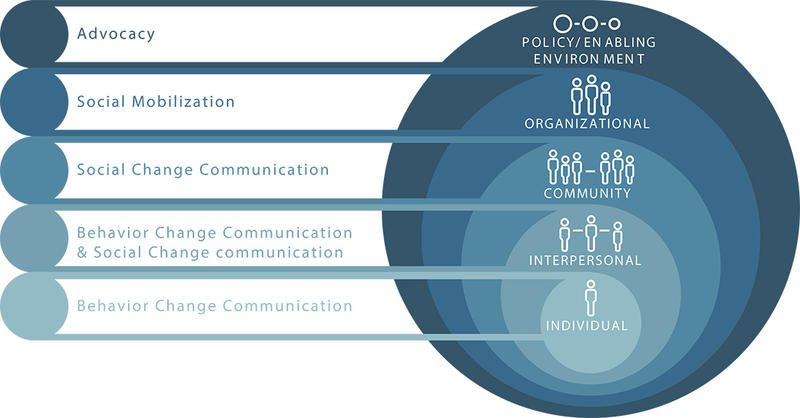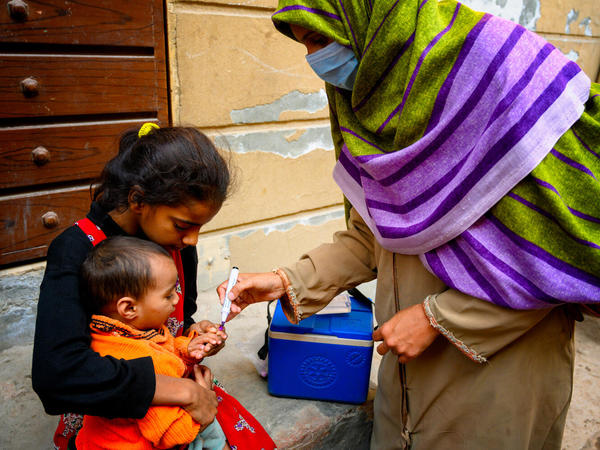Poliovirus and poliovirus outbreaks occur and spread due to large numbers of unimmunized children being susceptible to poliovirus. Certain risk factors, including environmental, seasonal and behavioural risk factors, may aggravate this disease transmission and resilience of the virus. Understanding them is is integral to our communication planning and can suggests to us areas of our behavioural and attitudinal focus. The disease itself presents both opportunities and challenges, and potentially key information to help design communication interventions. Social analysis can help us understand the society or community in which we are operating and put the data we have gathered into context. By building a thorough understanding, we can determine how best to get our message across.
We must consider the different components of a society (e.g. ethnic groups, minority groups, women, the role of boy and girl children, economic activities, human rights, gender, equity, social inclusion and relevant historical information). Be sure to also think about how these elements impact family size, power structures, marriage practices, health practices, nutrition, hygiene and other social norms.
Previous polio communications strategies commonly educated individual caregivers about polio and polio vaccination. The new Global Polio Communication Strategy is specifically designed to address the dynamic perceptions and social norms that deter caregivers from vaccinating their children. Our shift to social norm communications is grounded in recent research on populations affected by endemic polio or a polio outbreak, and their responses to polio eradication efforts.
Social norms include values, traditions and customs that provide individuals with knowledge of what the majority of people are seen to do, and what others think they should do. Social norms depict what happens (descriptive) or what should happen according to a group (injunctive). In the case of polio, a small but public rejection of vaccination could negatively impact the injunctive social norm, even if the broader descriptive norm is that 90% of the community is vaccinating their children. Alternatively, seeing neighbors vaccinate, a young mother may pick up on the injunctive norm of community acceptance for vaccination.
These community standards can apply as much within a family, as within a particular religious community, and even society as a whole.
Primarily, recent research shows the prevalence of deconstructive social norms in high burden areas. For instance, in the Bannu region of Pakistan, 99% of internally displaced persons (IDPs) supported polio vaccination, but only 60% could definitively say that other recent arrivals shared this belief (Harvard Data, 2014). Similarly, in Afghanistan, over 60% of caregivers reported hearing a destructive rumor about polio vaccination, and over 40% have believed these rumors (GPEI 11th Report: May 2015).
These negative perceptions and rumors can lead to vaccine rejections and can result in concentrated areas of unvaccinated children. These concentrated areas pose a significant threat to eradication efforts because they can incite new outbreaks or prolong existing ones.
Shifting communications to address inconsistent perceptions and prevailing social norms should effectively increase vaccine uptake in high burden and high risk areas.
Audiences are dynamic, with constantly changing perceptions, attitudes, and behaviors within a complex social system. To account for this, effective communications must also be dynamic and continually adapt to variances in audience norms. Your analysis to this point will undoubtedly reveal many different audience groups. A model can help you place and prioritize these audiences.
When constructing and adapting new and existing behavior change communications, consult the Social Ecological Model (SEM). The SEM is a framework often used by UNICEF to understand and address norms that influence individual and collective behaviors and societal norms, such as the acceptance or rejection of the polio vaccine. The model outlines five levels of society: individual, interpersonal, community, organizational, and policy/enabling environment.
During the development of norm-based behavior change communications, consider possible interventions at all five of the framework's levels. Utilizing a multi-level approach will help ensure communities and decision-makers at local, national, and regional levels are engaged in dialogue toward promoting, developing and implementing policies and programs that enhance the quality of life for all.

Source: UNICEF, MNCHN Guide Model 1:http://www.unicef.org/cbsc/index_65738.html
Learn more
Explore the other two learning modules in this 3-step tutorial to design evidence-driven communication strategies to help vaccinate every child.
Integrate communications tactics and understand their strengths and weaknesses, then evaluate performance.
Define your target audience and barriers to change, then develop messages and choose channels to reach your audience.



